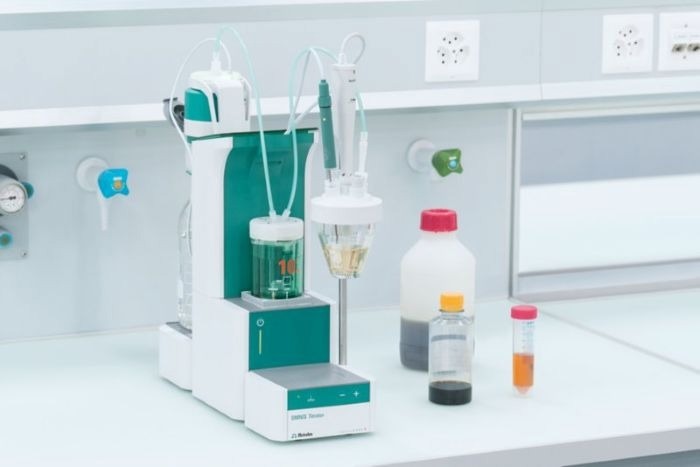Argentometric titration of chloride is commonly used to quantify sodium in foodstuffs. This approach assumes that all sodium ions in the sample come from sodium chloride. However, sodium can also come from other sources, such as monosodium glutamate. Therefore, assuming the chloride content corresponds to the sodium content can lead to inaccurate results. Direct titration of sodium using thermometric endpoint detection solves this issue.
 The OMNIS Titrator can be equipped for thermometric titrations. The OMNIS platform supports parallel titration and can be easily expanded for fully automated analyses. Image Credit: Metrohm AG
The OMNIS Titrator can be equipped for thermometric titrations. The OMNIS platform supports parallel titration and can be easily expanded for fully automated analyses. Image Credit: Metrohm AG
Thermometric titration (TET) is based on the principle that a chemical reaction results in an enthalpy change. During the titration, titrant is added at a constant rate, and the resulting temperature change is measured. A highly sensitive, fast-responding thermometer is used to detect the titration endpoint.
Because TET relies only on temperature change to determine the endpoint, there is no need for sensor calibration. Sensor maintenance is minimal, and the sensor can be stored dry between titrations.
Thermometric titration of sodium ions is based on the precipitation of elpasolite (NaK2AlF6). This precipitation reaction is exothermic, resulting in a temperature increase during the titration. Aluminum nitrate acts as the titrant, while potassium and ammonium are present in excess to ensure complete precipitation.
The titration requires only minimal sample preparation. Only thorough homogenization of the sample and complete release of sodium from the matrix are necessary. Accurate results are obtained in less than two minutes. Thermometric titration and its application to food samples are described in detail in a Metrohm white paper.